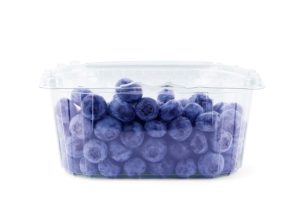Cultivating Year-Round Beauty: A Guide to Window Box Plants for Every Season
Imagine a vibrant splash of color greeting you every time you look out your window. A lush tapestry of green, punctuated by brilliant blooms, transforming a simple architectural feature into a living work of art. This is the magic of a well-tended window box. More than just a container for plants, a window box is a statement—a small-scale garden that brings nature’s rhythm right to your doorstep. But how do you maintain this stunning display throughout the year? The secret lies in selecting the right window box plants for the seasons.
This comprehensive guide will walk you through the art of cultivating a year-round spectacle in your window boxes. We’ll explore the best plant selections for each season, delve into essential care tips, and uncover creative design ideas to ensure your floral display is always a showstopper. Whether you’re a seasoned gardener or a complete beginner, prepare to unlock the full potential of your window boxes and create a continuous cycle of beauty that evolves with the changing year.
The Spring Awakening: A Symphony of New Growth

As the last frost melts away and the days begin to lengthen, a sense of renewal fills the air. This is the perfect time to inject your window boxes with the cheerful energy of spring. The goal is to create a display that is both fresh and resilient, capable of withstanding unpredictable early spring weather while bursting with promise.
Primary Spring Bloomers:
- Pansies and Violas: These are the quintessential spring window box plants. With their cheerful, face-like blooms and a wide array of colors, from deep purples and blues to sunny yellows and whites, pansies and violas are cold-hardy and thrive in cool weather. They provide instant color and can even tolerate a light dusting of snow.
- Tulips and Daffodils: Nothing says “spring” quite like a vibrant tulip or a nodding daffodil. While they require pre-planning (planting bulbs in the fall), the reward is a spectacular show of color. You can layer bulbs with other plants—a technique known as “bulb lasagne”—to extend the flowering period. For example, plant tulips at the bottom, daffodils in the middle, and pansies on top for a multi-level display.
- Primroses: These charming, low-growing plants come in a stunning spectrum of colors, from fiery reds and oranges to soft pinks and purples. Primroses prefer cooler temperatures and partial shade, making them excellent choices for north-facing windows or for adding a pop of color to the front of a window box.
Accompanying Foliage and Textures:
- Creeping Jenny: This versatile, chartreuse-colored perennial provides a beautiful trailing element that spills over the edge of the box, adding a cascade of bright green. It’s a fantastic contrast to the upright forms of tulips and primroses.
- English Ivy: A classic choice for a reason, English Ivy offers a dark, elegant backdrop and a timeless trailing effect. Its deep green foliage provides a beautiful contrast to the brighter spring blooms and offers structure that can last through the winter.
SEO Keywords: spring window box plants, cold-hardy flowers, tulip bulbs, pansies and violas, early spring gardening, container gardening tips, window box ideas
Summer’s Grand Performance: A Burst of Color and Abundance
Summer is the time for a truly spectacular display. With long, sunny days and warmer temperatures, you have a vast palette of plants to choose from. The key to a successful summer window box is selecting heat-tolerant, sun-loving varieties that can handle the full sun and continuous heat.
Primary Summer Stars:
- Geraniums (Pelargoniums): A true workhorse of the summer window box, geraniums are drought-tolerant and come in a dazzling range of colors, from fiery reds and corals to soft pinks and whites. They are easy to care for and provide a robust, upright structure.
- Petunias: For a continuous cascade of color, look no further than petunias. Trailing varieties like ‘Wave’ petunias are perfect for creating a lush, overflowing effect. They require regular deadheading to encourage more blooms but are well worth the effort for their long-lasting show.
- Lantana: This incredibly resilient plant thrives in heat and full sun. Lantana flowers are made up of clusters of small, vibrant blooms that change color as they mature, creating a multi-hued effect. They are also a favorite of butterflies and hummingbirds.
- Begonias: For windows that receive less direct sun, begonias are an excellent choice. Their lush, often waxy foliage and delicate blooms provide a tropical feel. Tuberous begonias offer large, spectacular flowers, while wax begonias are reliable and provide continuous color.
Complementary Textures and Trailing Plants:
- Sweet Potato Vine (Ipomoea batatas): Available in shades of chartreuse, deep purple, and variegated green, sweet potato vine is a vigorous and fast-growing trailer. It adds a lush, tropical feel and creates a stunning contrast with blooming flowers.
- Calibrachoa (Million Bells): Similar to a miniature petunia, calibrachoa produces hundreds of small, bell-shaped flowers. It’s an excellent choice for a trailing, self-cleaning plant that provides continuous color without the need for constant deadheading.
- Dichondra ‘Silver Falls’: For a truly elegant and sophisticated look, the silver, cascading leaves of Dichondra ‘Silver Falls’ are an outstanding choice. It creates a beautiful waterfall effect that complements any flower color.
SEO Keywords: summer window box plants, heat-tolerant flowers, full sun container plants, best flowers for window boxes, petunias and geraniums, drought-resistant plants, creating a summer display
Autumn’s Embrace: Harvest Hues and Rich Textures
As the days shorten and the air becomes crisp, it’s time to transition your window boxes to a warmer, more rustic aesthetic. Autumn is all about rich, earthy colors and fascinating textures. The goal is to create a display that reflects the beauty of the harvest season and provides visual interest even as temperatures drop.
Primary Autumn Plants:
- Chrysanthemums (Mums): A staple of fall decor, mums are available in a breathtaking array of colors, from classic golds and burnt oranges to deep reds and purples. They offer a dense, mounded form and a profusion of blooms that can last for weeks.
- Ornamental Cabbage and Kale: These are not your average greens! Ornamental cabbage and kale feature ruffled, multi-colored leaves in shades of cream, pink, purple, and green. They provide incredible texture and color that intensifies as the weather gets colder, and they can even tolerate light frost.
- Pansies and Violas (Revisited): Yes, they’re back! The cool weather of autumn is perfect for a second showing of pansies and violas. Their cheerful faces provide a bright contrast to the richer fall colors and can often last well into the winter in many climates.
Accents and Textural Elements:
- Heuchera (Coral Bells): Known for their striking foliage, Heuchera plants come in shades of purple, bronze, lime green, and even deep red. They provide a beautiful contrast in both color and form and can act as a permanent fixture in the window box, as many varieties are perennial.
- Grasses: Small ornamental grasses, such as fountain grass or sedge, add vertical interest and a wispy, natural feel to the arrangement. Their rustling sounds in the autumn breeze add an auditory element to the display.
- Berries and Branches: For a truly seasonal touch, incorporate small pumpkins, gourds, bittersweet branches, or pinecones. These non-living elements provide a rustic charm and can be easily swapped out for other decorations.
Winter’s Enduring Beauty: Greenery and Festive Flair
Don’t let your window boxes go bare in the winter! While many flowering plants won’t survive the cold, there are plenty of evergreen and hardy options that can provide a beautiful and festive display. The focus here shifts from blooms to foliage, texture, and structure.
Primary Winter Selections:
- Dwarf Evergreens: Small conifers like dwarf Alberta spruce, juniper, or boxwood provide a classic, structured base for your winter display. They offer year-round interest and a beautiful dark green backdrop.
- Holly and Winterberry: For a pop of festive color, incorporate branches of holly with its glossy green leaves and bright red berries, or winterberry, known for its dense clusters of vibrant red berries on bare stems.
- Picea Pungens (Colorado Blue Spruce): A miniature version of this majestic tree can provide a stunning silvery-blue element that contrasts beautifully with other greenery.
- English Ivy (Revisited): As a hardy evergreen, English Ivy continues to provide its classic cascading effect, often becoming a more prominent feature in the winter display.
Decorative Accents for the Holidays:
- Pinecones and Ornaments: Tuck in large pinecones, perhaps with a touch of silver or gold spray paint. Add waterproof Christmas ornaments for a festive touch.
- Birch Branches: The striking white bark of birch branches provides a beautiful, architectural element that stands out against the dark greenery.
- LED Lights: For a truly magical nighttime display, string battery-operated LED fairy lights through the greenery.
Read More Also: How to Style a Verandah
General Care and Maintenance for Year-Round Success
No matter the season, a few fundamental principles will ensure your window box plants thrive.
- Soil and Drainage: Always start with a high-quality, lightweight potting mix designed for containers. Ensure your window boxes have adequate drainage holes to prevent root rot.
- Watering: The most common mistake is improper watering. In summer, your window boxes may need to be watered daily, especially in hot weather. The general rule is to water when the top inch of soil feels dry to the touch. In cooler seasons, watering needs will decrease significantly.
- Fertilizing: Regular feeding is crucial, especially for the high-energy plants of spring and summer. Use a slow-release granular fertilizer at the beginning of the season or a liquid feed every two weeks.
- Deadheading and Pruning: Removing spent blooms (deadheading) encourages plants to produce more flowers and keeps the display looking tidy. Pruning or trimming back overgrown plants will also help maintain a pleasing shape.
- Pest and Disease Management: Keep an eye out for common pests like aphids or spider mites. A simple spray of soapy water can often be effective. Ensure good air circulation to prevent fungal diseases.
Read More Also: How to Choose Umbrellas for Patios
The Journey of a Thousand Blooms
Creating a beautiful window box display for every season is a rewarding journey that connects you with the natural world. It’s an ongoing process of observation, planning, and creative expression. By choosing the right window box plants for the seasons, you can transform a simple container into a dynamic, ever-changing masterpiece that brings joy to your home and all who pass by.









